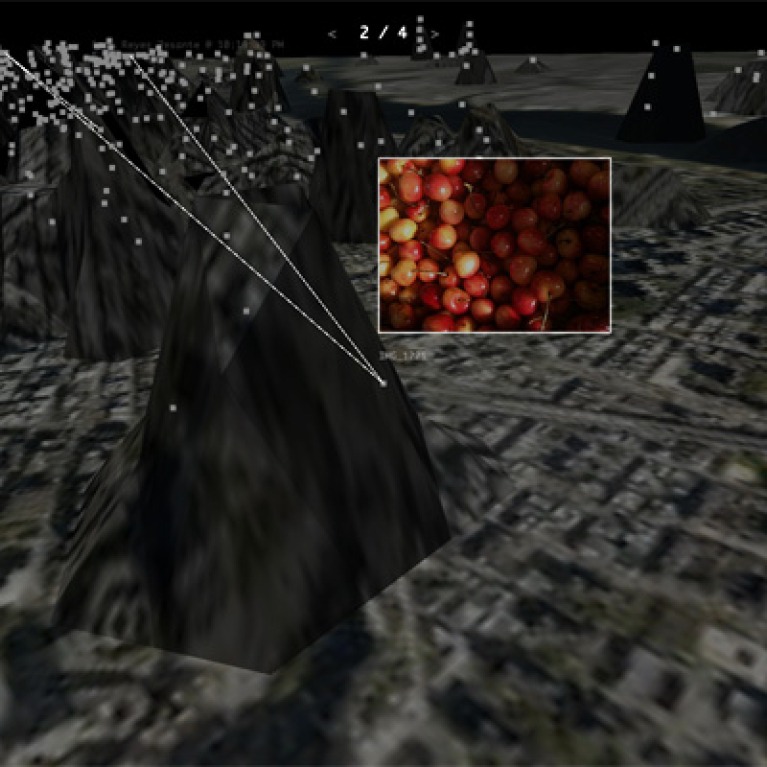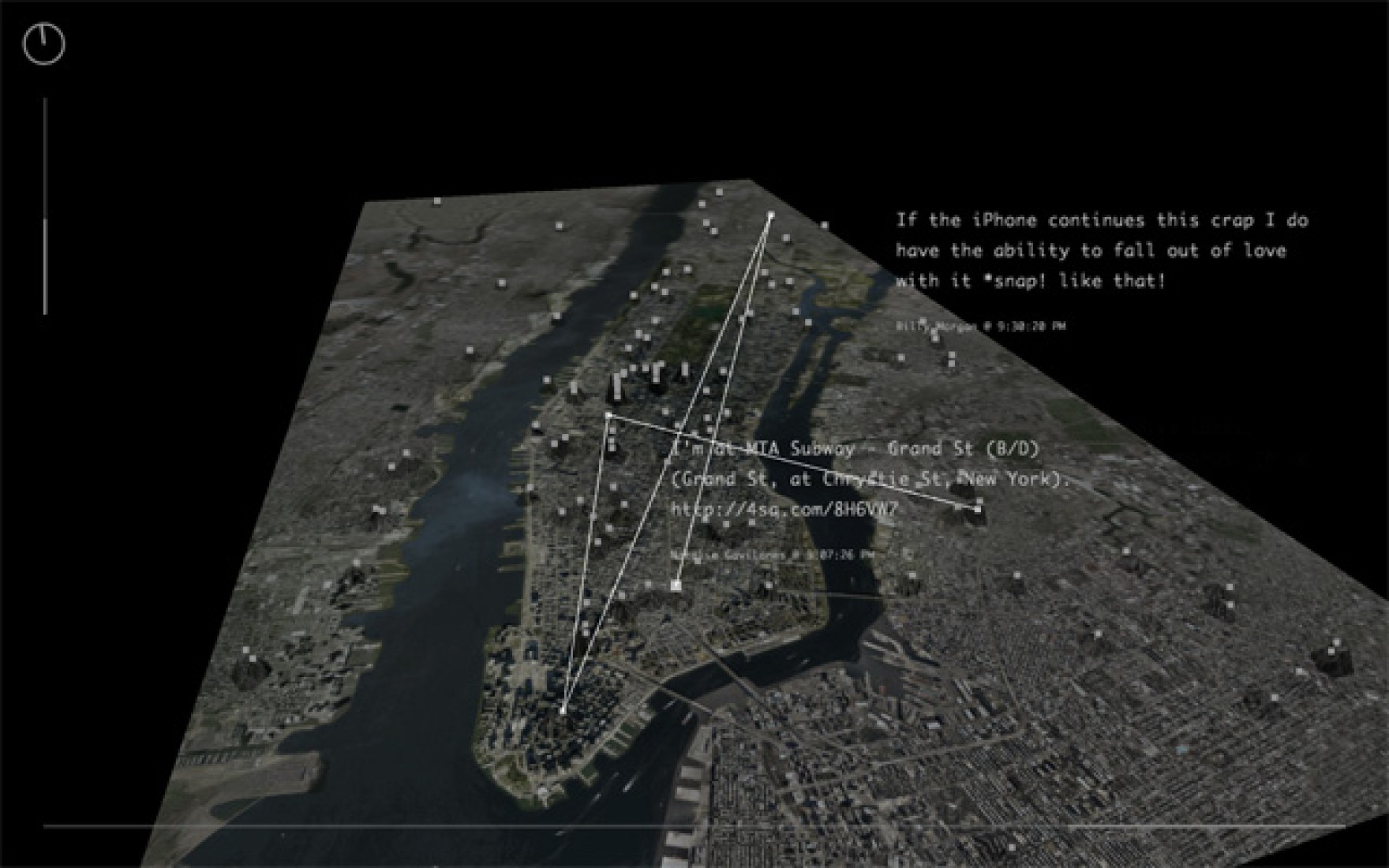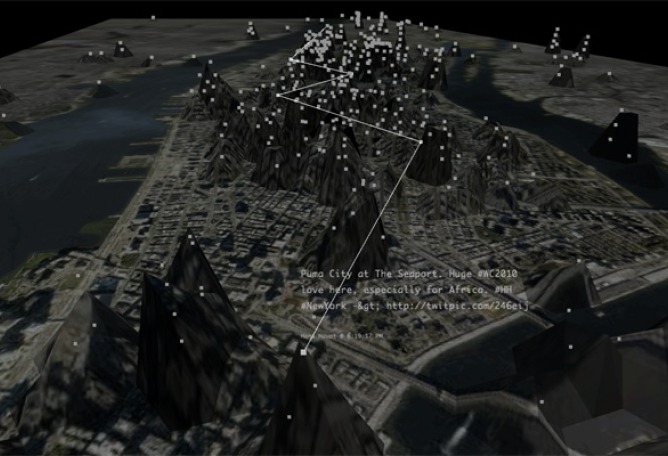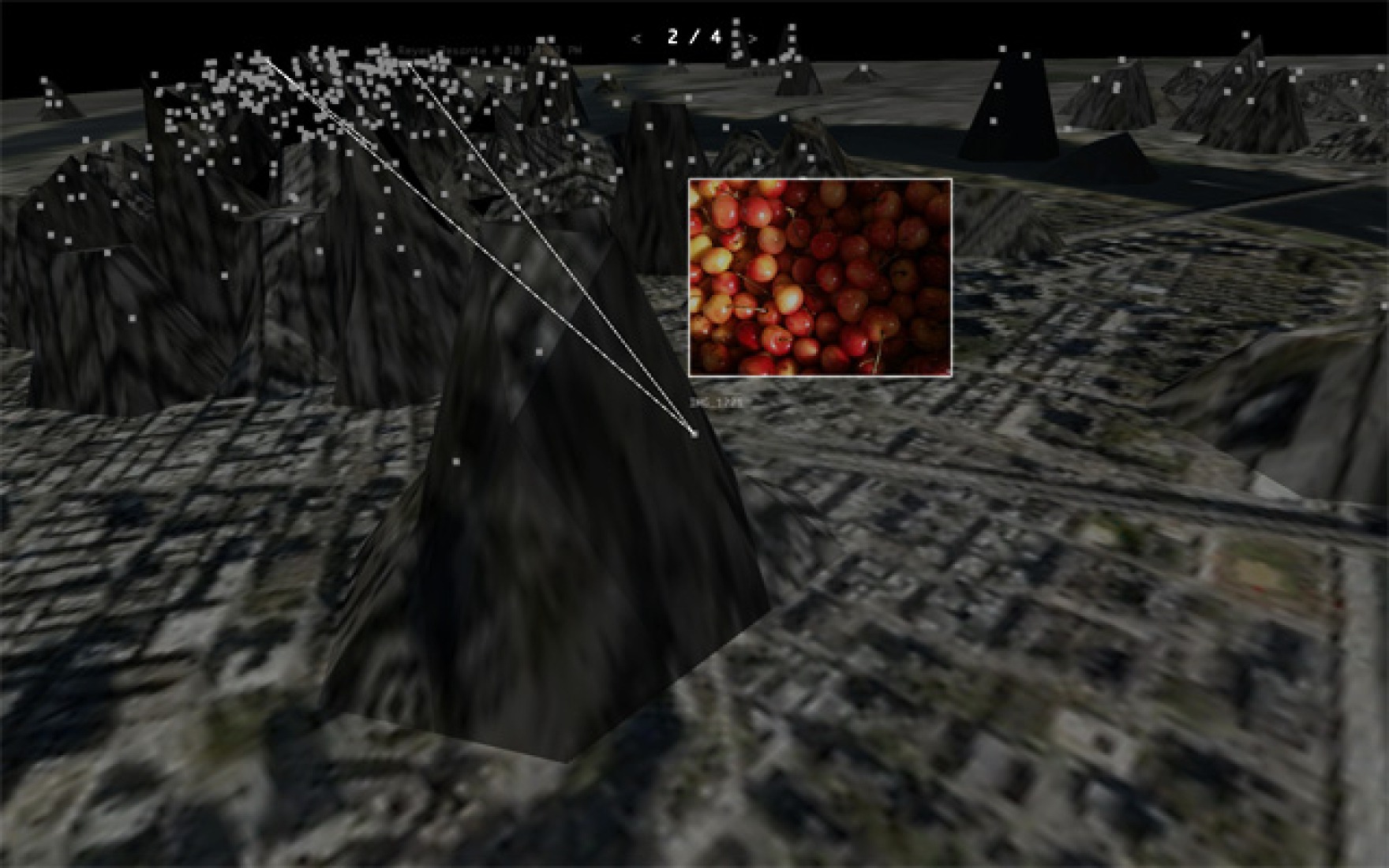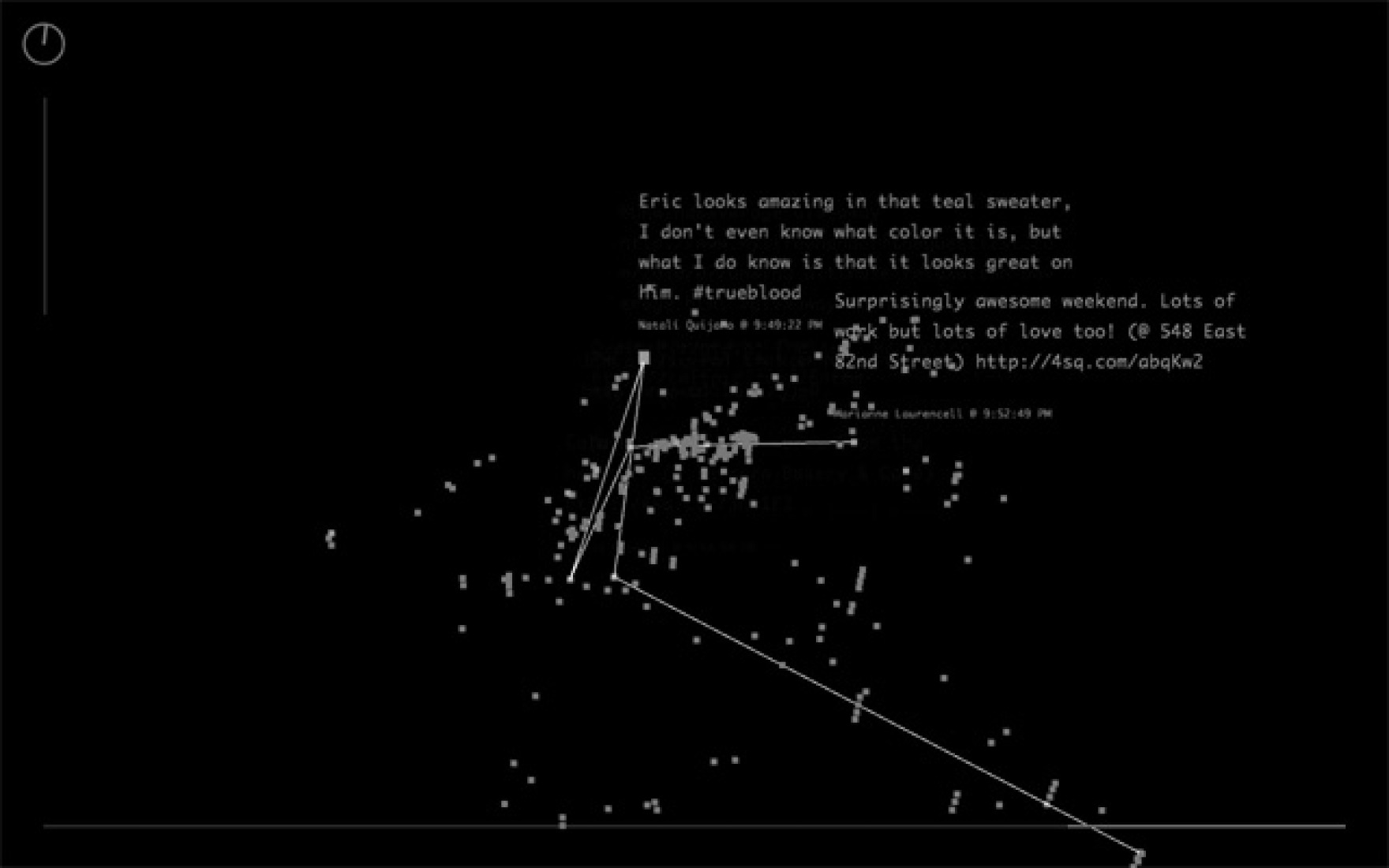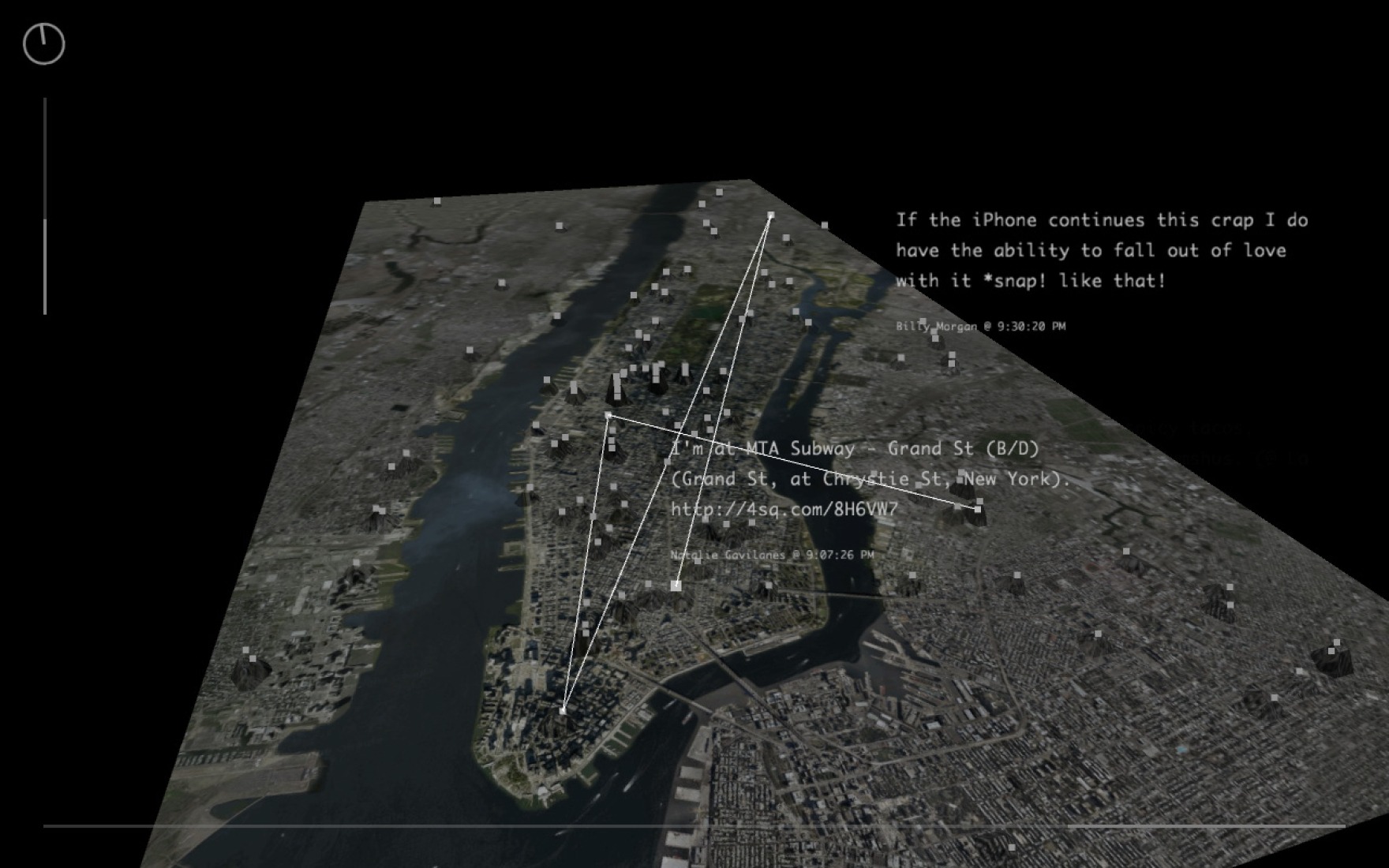In the piece, nodes are connected by narrative threads, based on themes emerging from the overlaid information. These pathways create dense meta-networks of meaning, blanketing the terrain and connecting disparate areas of the city.
Invisible Cities maps information from one realm - online social networks—to another: an immersive, three dimensional space. In doing so, the piece creates a parallel experience to the physical urban environment. The interplay between the aggregate and the real-time recreates the kind of dynamics present within the physical world, where the city is both a vessel for and a product of human activity. It is ultimately a parallel city of intersections, discovery, and memory, and a medium for experiencing the physical environment anew.
Concept/Design: Christian Marc Schmidt
Design/Development: Liangjie Xia
Christian Marc Schmidt is a German/American designer and media artist, educated in Europe and the United States and currently residing in New York. From an interest in working with data he has adopted a parametric, process-oriented approach in his work, which is concerned with evidence, disclosure and the materiality of information. Christian earned his Bachelor of Fine Arts degree from Parsons School of Design in New York, and attended the Yale University School of Art in New Haven, where he graduated with a Master of Fine Arts in 2004. His work has received international recognition, including from the D&AD in London, the Society for Environmental Graphic Design, Communication Arts, and the IDSA, and he has taken part in exhibitions and screenings nationwide and overseas. Christian has taught in the Interactive Telecommunications Program at New York University and the School of Visual Arts in New York. Follow him on Twitter at @cms_
Liangjie Xia is a media artist and programmer presently based in New York City. His work explores alternative forms of communication through innovative applications of technology, his experiments vary from interactive data visualization, mobile applications to physical installations. He loves and contributes to open source projects, and hacks with whatever is handy. Liangjie recently received Master of Professional Studies degree from Interactive Telecommunications Program of NYU.
